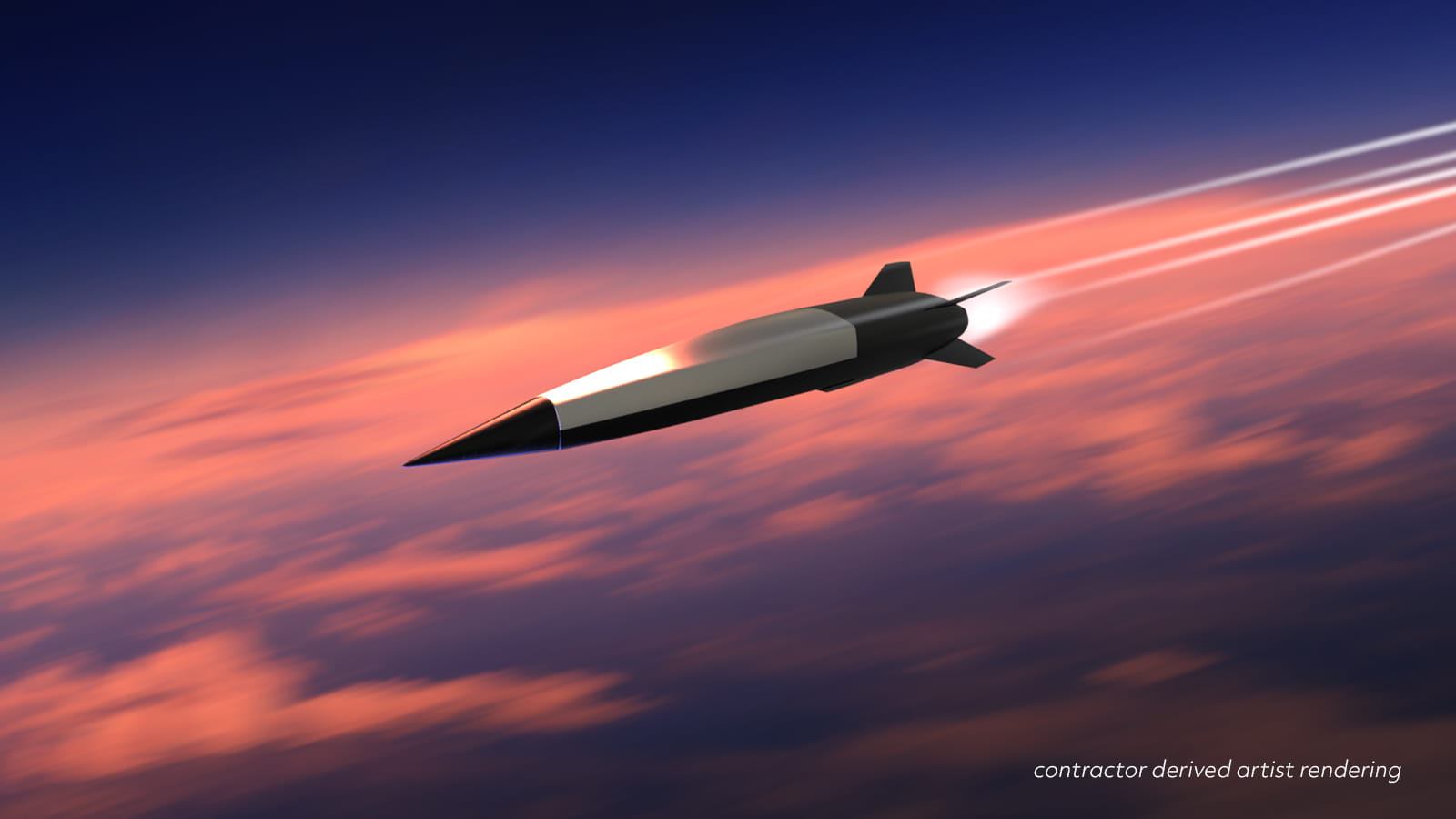Hypersonic weapons travel in excess of five times the speed of sound — Mach 5 — covering vast distances in minutes.
Hard to stop, they fly and nimbly maneuver to avoid detection and dodge defensive countermeasures.
We’re using our decades of expertise to deliver digitally engineered, end-to-end offensive and defensive technologies to help keep the world safe. And the innovation never stops.
To accelerate hypersonic advances, we partner in creative ways that bring proven technology together with cutting-edge developments in heat management, propulsion and sensing. Teaming across the industry enables us to move advanced hypersonic capabilities out of laboratories, into test environments and into the hands of warfighters at top speed.
Fostering innovation
Our experts across the company apply knowledge and lessons learned from over 50 years of missile experience to digital engineering tools, such as digital twins and modeling and simulation, to accelerate hypersonic development.
Strengthening alliances and partnerships with universities, industrial peers, allied countries and the government is crucial to advance the state of the science. By working together, we share knowledge, infrastructure, human resources and funding to address the threat.
Partnering with the Joint Hypersonics Transition Office and academic research institutions to face the challenge together will have cascading benefits. Many of the required skills are applicable to commercial aerospace and other areas of development needed to maintain a technological edge.

Taking flight
Hypersonic testing in support of fielding is a top priority and moving technology out of laboratories and into test environments is more important than ever. Design and subsystem testing has progressed, and it is time to maximize testing and begin flying hypersonic vehicles.
Critical data will be gathered to confirm ground test and simulation results to rapidly support fielding. Concurrent with flight testing, we will invest in the industrial base to support production of hypersonic weapons at rate. A robust and resilient supply chain is key to moving quickly to stay ahead of advanced threats.

News
Two early-career engineers offer up-close look at their roles in the HAWC missile test
Learn moreAdvanced offensive hypersonic capabilities
We’re applying our advanced weapon expertise to develop air-breathing hypersonic scramjet systems that use fast-moving air around them to provide oxygen for propulsion, relying on a single solid rocket booster with no moving parts. This design results in a lower risk, less complex and more cost-effective solution when compared to boost-glide systems, which use rocket motors to launch the weapon into the very upper edge of the atmosphere.
A missile heats up as it accelerates through the atmosphere and its inner electronics must be protected from blazing temperatures without adding extra weight, which can affect speed, range and guidance. Air-breathing systems don’t fly as high or as fast as boost glide systems and can rely on more conventional, lower cost and higher yield materials for their airframe. Boost-glide systems require more exotic materials that are expensive and hard to fabricate to dissipate the increased heat.
Because air-breathing systems are smaller, they can be carried in larger numbers on both fighter jets and bombers, increasing overall loadout, while boost-glide vehicles can only be carried on bombers.
Scramjet and boost-glide systems are both needed to address adversary threats. We’re investing in new infrastructure, a highly skilled workforce and advanced technology to meet and overcome challenges in developing offensive capabilities.

Countering the hypersonic threat
We’re continuing to innovate breakthrough hypersonic technologies to counter the threat. From advanced sensors that detect the threat to a command-and-control system passing information to the effector that enables target defeat, we have the technology to take out threats ahead of time.
Our systems are getting smarter every day. We continue to evolve our missile interceptors, directed energy and cyber technologies to address the hypersonic threat.

